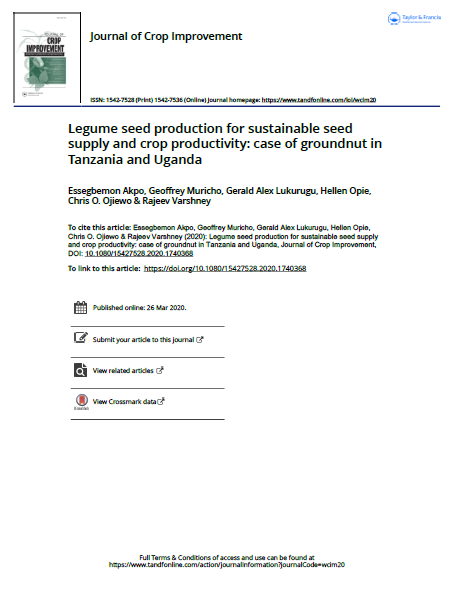Legume seed production for sustainable seed supply and crop productivity: case of groundnut in Tanzania and Uganda
Summary
Improving agricultural productivity and production is a prerequisite to sustain rural livelihoods in the developing countries of sub-Saharan Africa (SSA). This requires increased use of quality seed of improved and well-adapted crop varieties. Legumes are particularly critical in ensuring food and nutritional security for the majority of farming households. However, their productivity has been constrained because of limited availability of quality seed, jeopardizing food security and rural livelihoods. The lack of interest in production of legume seeds by potential seed producers, especially the private sector, is attributable to limited information on the cost and profitability of producing these seeds. Using primary data collected from Tanzania and Uganda, we analyzed the cost structure of improved groundnut (Arachis hypogaea L.) seed production to assess viability. We adopted a cost–benefit analysis framework to evaluate different seed production models. Results showed that groundnut seed price varied between USD 1–2/kg−1 for certified and quality declared seed and between USD 2–3.5/kg−1 for early generation seed. Overall, up to 50% increase in total seed production costs resulted in reduced drop in the gross margin earned. However, when production costs increased by 75–100%, the gross margin dropped by about 18% and 50% in Tanzania and in Uganda, respectively. These findings indicated that groundnut seed could be provided to farmers in remote communities at an affordable price while still keeping seed producers profitably in business. Making these seeds available to smallholder producers is a major step in achieving food security and nutritional health in developing countries in SSA.
Open resource Download resource

